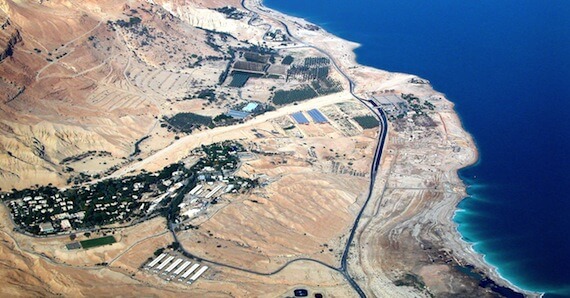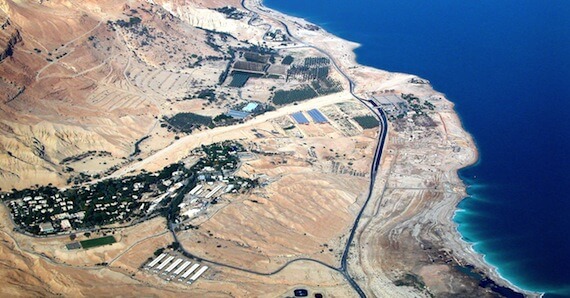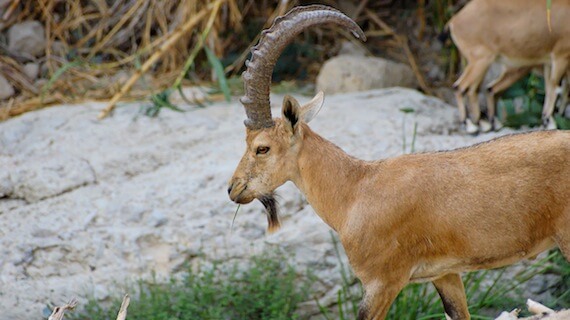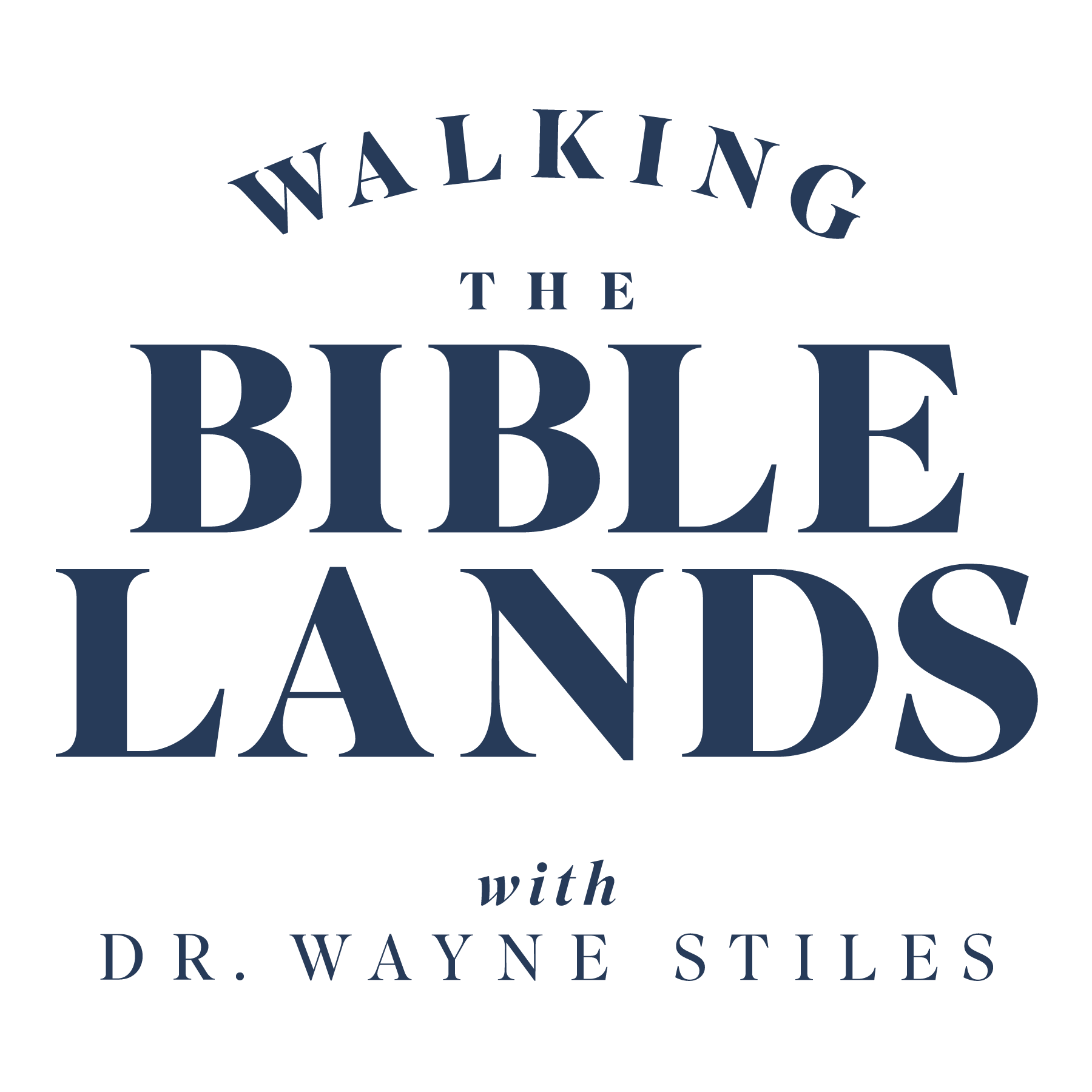3 min read
Ein Gedi—A Testimony to God’s Grace and Provision
Finding Hope Against A Depressing Backdrop Of Death And Desperation.
Wayne Stiles
:
Nov 15, 2016 9:00:48 PM

Ancient travelers who made their way along the shores of the Dead Sea would no doubt shake their heads when they saw it. How could so much water stand in such a barren place—and none of it be drinkable?

(Photo: The oasis of Ein Gedi beside the Dead Sea, courtesy of the Pictorial Library of Bible Lands)
Before the obliteration of Sodom and Gomorrah, the Jordan Valley looked like the “garden of the Lord” (Genesis 13:10). But afterwards, even the many springs that bubbled beside the Dead Sea tasted too salty to swallow. The plentiful waters gave nothing in the way of sustenance.
They only offered a spiritual prompt of the need to take God seriously.
Against this depressing backdrop of death and desperation flows the Ein Gedi.
Ein Gedi—A Spring for More than Goats
If you want to find where history took place, just look for the waterholes.
Ein Gedi means, “Spring of the Wild Goat,” and suggests that animals—not just people—depended upon its fresh and plentiful streams (1 Samuel 24:1-2).
- Because Ein Gedi represented one of only two springs that offered fresh water west of the Dead Sea, every nomad, wanderer, and warrior stopped there as they passed.
- The Bible records Ammonites, Edomites, Meunites, and Moabites—Judah’s neighbors east of the Jordan—gathering there before their attack on Jehoshaphat (2 Chronicles 20:1-2).
[slideshow id=34]
(All pics courtesy of the Pictorial Library of Bible Lands)
But Ein Gedi served as more than a popular pit stop for travelers.
With regional water so scant, the spring hosted numerous settlements throughout history—thousands of years of continuous habitation.
- God allotted Ein Gedi to the tribe of Judah (Joshua 15:62), from which came David.
- David’s familiarity with the oasis and its caves allowed him to select hiding places from the jealous King Saul (1 Samuel 23-24). David may have written Psalms 57 and 142 here, as the superscription for each psalm mentions David composing them in a cave.
- The Hasmoneans made Ein Gedi their royal estate and administrative center in the 2nd-century BC.
- Eusebius described Ein Gedi in his Onomasticon as being “a very large village of Jews.”
- The area has a Canaanite temple as well as Roman forts, a Byzantine fort, and an Israelite fort—all situated to protect the nearby roadway.

(Photo: a hidden waterfall at En Gedi’s Nahal Arugot, courtesy of the Pictorial Library of Bible Lands)
A Symbol of Provision, Beauty, and Uniqueness
A vibrant blotch of green on an otherwise colorless landscape, Ein Gedi came to symbolize not only beauty, but also that which stands out as unique. David’s son, Solomon, is compared to “a cluster of henna blossoms in the vineyards of Engedi” (Song of Solomon 1:14).
Even today, the Ein Gedi National Park remains a distinctive oasis for flora and fauna—that’s an alliterative reference to “vegetation” and “wildlife.”

(Photo: Ibex at Ein Gedi, courtesy of the Pictorial Library of Bible Lands)
- The flora grows near the streams and includes cattails, reeds, the Christ-thorn, the Sodom apple, and the acacia tree. Mosses and ferns cling to the cliffs.
- The fauna include hyraxes (coneys that look like large rodents), desert leopards, and panthers.
- But the most common animal visitors see is the ibex, a wild Nubian goat. With hooves that make climbing look relaxed, they scamper across the cliffs effortlessly. Their piercing brown eyes and distinctive horns capture the attention of every hiker who sees them.
The Visitors Center offers maps for several levels of hiking and various lengths of trails. Hikes can last from one hour to seven.
- The most popular trail follows the Wadi David’s stream—which flows from the immense Shulamit falls—and requires a leisurely hour round-trip.
- More experienced hikers might enjoy the Upper David Trail and the Tsafit Trail.
- For those guests who want some pampering, the Ein Gedi Health Spa (about 4 km south of the national park) offers hot sulfur baths as well as private access to the Dead Sea.
An Illustration of God’s Grace
Exaggeration fails to describe the relief that Ein Gedi would have given the weary traveler in antiquity. Even today, the oasis offers refreshment for the locals and the tourists alike.
In this barren region that has struggled to support life since the destruction of Sodom and Gomorrah, Ein Gedi has flowed for thousands of years as a longstanding testimony to God’s grace.
God does the same in our lives, doesn’t He? He offers hope against a depressing backdrop of death and desperation.
Tell me what you think: How has God given hope against hope in your life? To leave a comment, just click here.
Ein Gedi on the Map:
See The Holy Land In Person
Journey to the Bible Lands with Wayne Stiles. You will NEVER be the same! Learn more:
Click here to leave a comment.
-1.png?width=5230&height=1198&name=unnamed%20(4)-1.png)


.jpg?width=350&name=Wayne-books-350wide%20(1).jpg)




